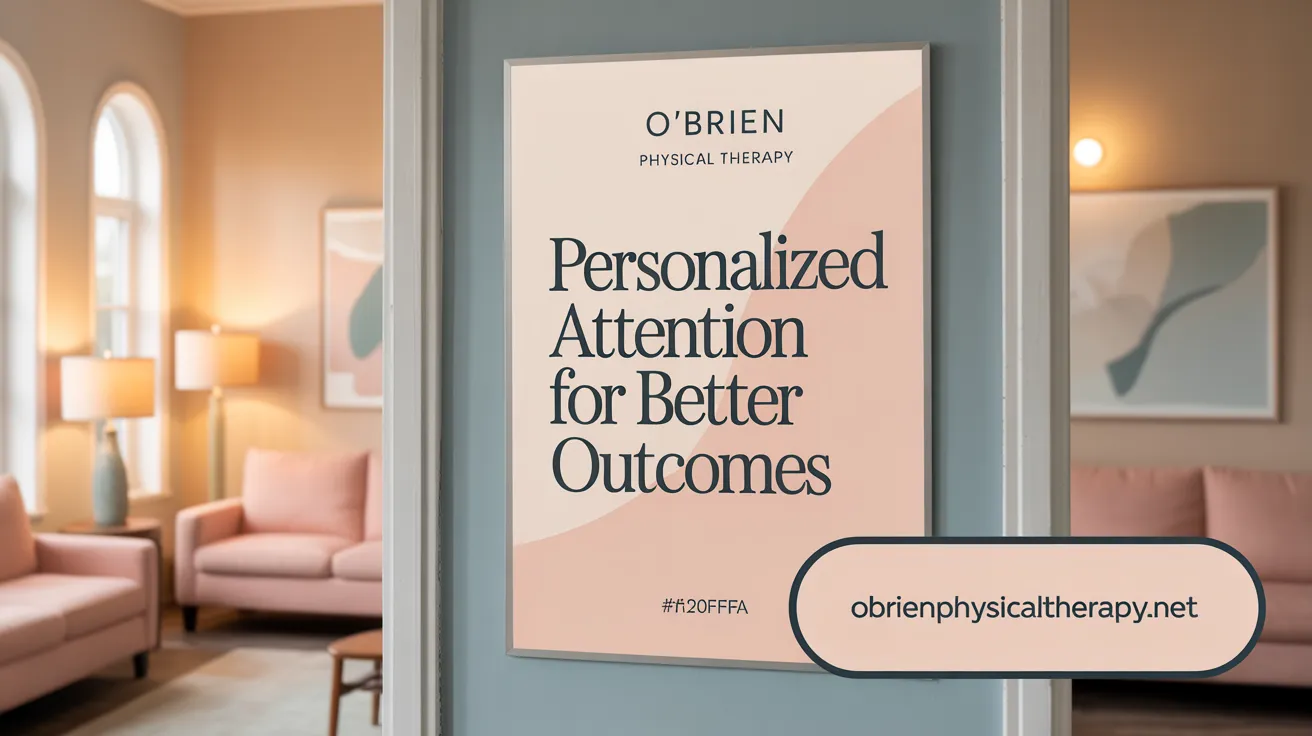Personalized Care Plans: Revolutionizing Physical Therapy
Personalized care plans in physical therapy represent a groundbreaking shift from generic treatments to individualized approaches that focus on the whole body and the unique needs of each patient. This comprehensive approach not only accelerates recovery but also fosters long-term health, reduces future injury risk, and enhances overall patient satisfaction. Understanding why these plans matter is essential for appreciating their benefits in healing and rehabilitation processes.
Holistic Approach in Personalized Physical Therapy

Why does personalized physical therapy focus on the whole body rather than just the injury?
Personalized physical therapy emphasizes treating the whole body, not just the immediate injury. This approach helps identify root causes of pain or dysfunction that may extend beyond the injured area. By assessing posture, strength, flexibility, and movement patterns throughout the body, therapists can uncover hidden contributing factors. This leads to a more accurate diagnosis which supports effective recovery and reduces the risk of chronic problems.
How do personalized care plans help prevent future injuries?
Comprehensive, individualized physical therapy plans strengthen muscles, correct posture, and optimize movement patterns. They address imbalances and weaknesses that often cause recurring injuries. By focusing on the entire body’s function and mobility, these plans improve overall physical health. This systematic strengthening and correction reduce compensations and biomechanical faults that might otherwise lead to new injuries.
What is included in comprehensive care plans?
Personalized plans incorporate targeted exercises, manual therapy, and education tailored to an individual’s specific needs. They focus on improving bodily function while promoting long-term health. These plans are flexible, adapting with progress to ensure continual improvements. The holistic scope also considers lifestyle factors, patient goals, and activity levels, ensuring therapy is relevant and effective.
Through a holistic, whole-body focus, personalized physical therapy delivers more than injury treatment. It supports sustained recovery and injury prevention by addressing the body as an interconnected system rather than isolated parts.
One-on-One Sessions: Enhancing Patient-Therapist Collaboration

What are the advantages of one-on-one physical therapy sessions?
One-on-one physical therapy sessions offer focused, individualized care where therapists can closely observe and respond to the patient's unique needs. This dedicated attention allows for precise real-time feedback and corrections during exercises, which improves safety and effectiveness. Patients also experience better motivation and confidence, which supports adherence and faster healing. The personalized setting fosters trust and open communication, encouraging patients to share their symptoms and progress honestly.
How does continuity with the same therapist improve treatment outcomes?
Consistently seeing the same therapist helps build a strong therapeutic relationship. This continuity allows the therapist to gain a deeper understanding of the patient’s history, goals, and unique challenges. It enables more accurate tracking of progress over time and timely adjustments to the treatment plan if needed. The strengthened patient-therapist trust promotes honest dialogue, which is crucial for tailoring care and ensuring treatments stay aligned with patient needs. For athletes and active individuals, this can result in quicker recovery and better injury prevention.
Together, one-on-one sessions with a consistent therapist provide a comprehensive, responsive approach to physical therapy, optimizing recovery and patient satisfaction.
Tailored Treatment Plans: Optimizing Functional Recovery

How do tailored treatment plans optimize recovery?
Tailored treatment plans begin with a detailed, individualized assessment that evaluates a patient's medical history, physical condition, movement patterns, and personal goals. This comprehensive evaluation identifies specific strengths and limitations. Based on these insights, therapists design targeted exercises focusing precisely on improving mobility, strength, and function where it's most needed.
This targeted approach allows therapy to be efficient by concentrating on interventions that will bring meaningful improvement. It avoids unnecessary or generic exercises that may not benefit the individual, ultimately speeding up recovery and enhancing long-term outcomes.
Customized plans also emphasize correcting posture and movement, which helps restore natural body mechanics and prevents future injuries. Patients learn to move more effectively, reducing strain and improving daily function. For more information, see Personalized physical therapy benefits.
What role do SMART goals play in physical therapy?
Setting SMART goals—Specific, Measurable, Achievable, Relevant, and Timely objectives—is crucial in personalized physical therapy. These clearly defined targets provide both therapist and patient with a roadmap for therapy progress.
SMART goals help maintain motivation by making progress tangible and meaningful. They ensure that every exercise and therapy session has a clear purpose aligned with the patient’s lifestyle and recovery timeline. This structured framework allows adjustments based on results and feedback, keeping the therapy both dynamic and focused.
Patients experience greater engagement and confidence as they see measurable improvements toward their personalized goals, reinforcing adherence and supporting sustained recovery. For additional insights, refer to Personalized physical therapy approach with SMARTI goals.
Cost-Effectiveness and Clinical Fidelity of Personalized Approaches
Is personalized physical therapy cost-effective compared to usual care?
Recent studies, particularly those examining the Coach2Move physical therapy approach for older adults with mobility problems, demonstrate that personalized physical therapy is indeed cost-effective. Compared to usual care, Coach2Move not only achieved better health outcomes but also reduced long-term costs by preventing reinjuries and promoting full rehabilitation. Economic evaluations noted a significant improvement in patient quality-adjusted life years (QALYs) without increased healthcare spending, meaning personalized plans delivered better value over time (Cost-Effectiveness of Personalized Physical Therapy).
What facilitates high fidelity to personalized therapy approaches among clinicians?
High clinical reasoning fidelity in personalized therapy is driven by multiple facilitators:
- Specialized Training and Coaching: Therapists trained in Coach2Move showed fidelity scores above 70% across most clinical reasoning phases, indicating effective adoption when supported by ongoing mentorship (Coach2Move program).
- Motivational Interviewing and Shared Decision Making: These techniques enhance patient engagement and individual tailoring, forming core components of the approach (Motivational interviewing in physical therapy.
- Tailored Medical Records: Customized documentation systems assist therapists in focusing treatment plans and tracking progress (Specialized medical record for Coach2Move.
- Therapist Readiness and Support: A willingness to embrace change and adequate time allocation for assessments help implement personalized care effectively (Therapist readiness to change in physical therapy.
Barriers and Facilitators in Implementation
Implementing personalized therapy programs like Coach2Move faces challenges, including scheduling longer intake sessions, managing multiple electronic medical systems, concerns over reimbursement, and some patients' low motivation (Barriers to Coach2Move implementation. However, the positive patient outcomes and therapist experiences underscore the value of overcoming these barriers. Regular coaching and organizational support act as key facilitators for embedding personalized strategies in clinical practice (Implementation facilitators for Coach2Move.
Personalized Physical Therapy for Older Adults and Special Populations

How does personalized physical therapy benefit older adults?
Personalized physical therapy offers significant benefits for older adults by specifically addressing their unique mobility problems. Through individualized treatment plans featuring tailored exercises, these programs improve strength, balance, and flexibility essential for maintaining functional independence. Techniques such as motivational interviewing and SMARTI goal setting encourage active patient involvement and boost motivation. This focus on engagement supports self-management, empowering older adults to take charge of their health and maintain mobility over time. By targeting root causes of mobility limitations and adapting programs progressively, personalized therapy helps reduce fall risk and enhances quality of life for this population.
What challenges exist in implementing personalized therapy for older populations?
Implementing personalized physical therapy in geriatric care faces several challenges. Scheduling extended intake and follow-up sessions can be difficult due to limited availability and the increased time required for thorough assessments. Some patients may exhibit low motivation or a lack of understanding regarding the importance of physical activity, which can limit adherence. Additionally, managing multiple electronic health record systems poses administrative burdens, complicating documentation and coordination. Therapists may also face financial concerns related to income loss when shifting to longer, more individualized sessions. Despite these barriers, the facilitators to successful implementation include specialized medical records, therapist coaching, and a readiness to embrace change.
Supporting Long-Term Engagement and Functional Independence
Successful personalized physical therapy emphasizes empowering older adults to manage their health independently. This involves setting inspiring, measurable goals and encouraging self-monitoring and active participation throughout therapy. Therapists trained in such approaches report higher fidelity to individualized methods and positive patient responses. Ultimately, this results in improved physical activity levels, reduced mobility restrictions, and sustained independence, contributing to healthier aging and reduced healthcare costs.
Technology and Personalized Care: Enhancing Therapy Effectiveness
How is technology shaping personalized physical therapy?
Technology is transforming personalized physical therapy by providing advanced tools that allow for precise, tailored treatment. Wearable devices like smartwatches and sensors continuously monitor patient progress and collect detailed biometric data. This real-time information helps therapists adjust exercise plans to individual needs and healing paces.
TeleRehabilitation—remote therapy via telehealth platforms—improves accessibility for patients who cannot attend in-person sessions, maintaining adherence and enabling frequent monitoring. Gamification incorporates motion-sensor gaming technology to make therapy more engaging and motivating, promoting active participation throughout recovery.
Data-driven prognosis tools generate personalized recovery benchmarks, allowing therapists and patients to visualize progress and adapt goals based on evolving health status. This integration of technology enhances safety, confidence, and effectiveness in therapy.
What is the 'people-like-me' approach in rehabilitation?
The 'people-like-me' framework uses anonymized data from patients with similar health profiles to establish expected recovery trajectories. By analyzing outcome measures from these comparable cases, therapists create individualized reference charts that help set realistic goals and monitor progress in real-time.
This evidence-based strategy facilitates more meaningful patient-centered decision-making. It also provides motivation and clarity for patients, as they can see how their recovery aligns with others like them, enabling early identification of deviations and prompt intervention.
Together, these technological advances empower physical therapists to deliver highly customized care, improving outcomes and fostering patient engagement in their rehabilitation journey.
Empowering Patients Through Education and Active Participation
Why is patient education critical in personalized physical therapy?
Patient education is a cornerstone of personalized physical therapy because it equips patients with a clear understanding of their specific conditions and the purposes behind each treatment method. This knowledge fosters motivation and encourages patients to actively participate in their recovery process. When patients comprehend why particular exercises or interventions are prescribed, they are more likely to adhere to their therapy plans and maintain consistent effort. Educated patients can communicate their symptoms and challenges more effectively, enabling therapists to adjust treatments promptly and accurately.
How do home exercise programs complement personalized therapy?
Home exercise programs are essential components that extend the benefits of one-on-one physical therapy sessions into patients’ daily routines. These programs are tailored to each individual’s unique needs, addressing limitations, goals, and progress. By performing prescribed exercises at home, patients reinforce improvements in strength, mobility, and function gained during therapy sessions. This consistency helps prevent setbacks and supports ongoing recovery. Furthermore, home exercises empower patients by giving them control over their rehabilitation, boosting confidence and self-efficacy. Learn more about personalized home exercise plans and their role in recovery.
Role of self-efficacy in long-term health management
Self-efficacy—the belief in one’s own ability to perform exercises and manage health—is vital for sustaining recovery outcomes. Personalized physical therapy fosters self-efficacy through education, clear goal-setting, and supportive guidance. As patients experience progress and understand how their actions influence health, they develop the confidence to maintain healthy habits autonomously. This proactive engagement is crucial for managing chronic conditions, preventing future injuries, and achieving lasting well-being. Explore how self-management and empowerment are supported in personalized physical therapy.
Patient education, combined with personalized home exercise programs, forms a powerful partnership that empowers patients. This approach encourages active involvement, promotes adherence, and supports high-quality, long-term health management beyond the clinical environment.
The Lasting Impact of Personalized Physical Therapy
Personalized care plans in physical therapy transform complex recovery challenges into manageable, patient-focused journeys. By addressing individual needs through one-on-one sessions, tailored exercises, and technological innovations, these approaches accelerate healing, reduce reinjury risk, and substantially improve quality of life. As healthcare continues evolving, embracing personalized physical therapy ensures treatments are not only effective but empowering, fostering long-term wellness and active independence for patients across all ages.
